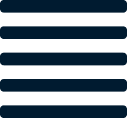You may have noticed your car is a little bit more expensive to fill up, or that guac is even more extra these days. Inflation is certainly upon us. The question is, how will you keep up?
According to a consumer price index, prices of common items increased 6% in October compared to last year. This is the fastest recorded yearly increase in 30 years. So what gives?
Many businesses are increasing prices to offset higher supply chain costs, labor and supply shortages, and increased demand. With stimulus filled pockets and the return of more pre-pandemic activities, consumers are ready to spend. But should you be charging them more? Consider the following factors before you make your decision.
Margin
Protect it at all costs. From a financial perspective, this makes the most sense. When costs go up, raise prices so that you can maintain the same margin. While this may work in some cases, it's the job of the planner to determine what impact this would have on sales, and in turn, margin.
Be sure to consider your total assortment’s margin given changes in retail pricing and demand. Intentionally driving demand for other items in your product assortment may help offset any necessary price changes. In the same vein, there may be products that are worth increasing over others given that product’s stickiness.
Supply
Traditional laws of economics would suggest decreasing prices when supply is high and increasing them when supply is low. And these days, customers are aware of the challenges plaguing the shelves of their favorite retailers. (This is the reason why 20% of consumers are starting their holiday shopping in August.) Shopping around is no longer a luxury for those who are time sensitive.
Consider the trajectory of your receipts and the times you expect stock levels to fluctuate. Would it make sense for you to change pricing as your stock position changes? Chances are probably not. This could lead to a frustrating customer experience and inflated calls requesting price adjustments. But you also don’t want to increase prices at a time when stock is low only to then be in a position with excess stock. Look at your stock position for the next 6 months and use it as a lever for determining the optimal price. Be prepared to revisit the exercise again before the close of 2022.
Competition
Depending on your customer’s loyalty, competition may or may not play a factor into how you should adjust your pricing. Pick three close competitors and monitor their pricing and indicators of stock position over time (emails, site merchandising and copy, etc). Be sure to check in on a regular basis to ensure you’re not being priced out.
Up up and away
If after you’ve exhausted these efforts and determined there is no other feasible way to offset costs (like optimizing shipments and storage) then your best bet may be to subtly increase your prices. Keep a close eye on any changes in demand and adjust over time as needed.
Having the right tools in place to react to changing demand and inventory will be critical in optimizing your time. That’s where Fuse Inventory comes in. Fuse creates demand forecasts for your entire business and takes into account the unit impact of price changes. With Fuse, you have full visibility into your inventory needs and the ability to create POs with the click of a button.
Don’t just take our word for it. Sign up now for a complimentary product demo so you can spend less time planning, and more time strategically pricing, among other things.
.png)

.png)









.png)



%20hover.png)
.png)
hover.png)







Let us know what you think about this post
Put your comment below.